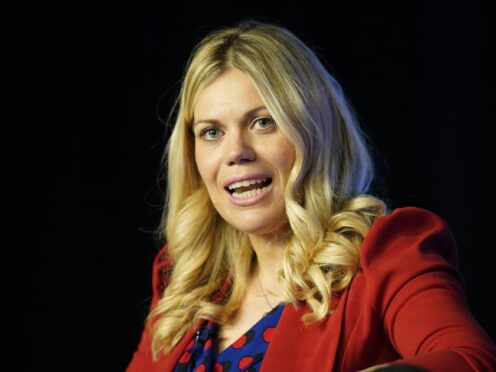
A Conservative candidate has insisted she does not and has never advocated so-called “gay conversion therapy” after a church of which she was a member and trustee apologised to a man who said he underwent an “exorcism” which attempted to make him straight.
The Diocese of Sheffield issued a statement describing conversion therapy as “unethical, potentially harmful” and something which “has no place in the modern world” after a report upheld the survivor’s complaint.
Miriam Cates, Conservative candidate for Penistone and Stocksbridge in South Yorkshire, was a member of St Thomas Philadelphia Church in Sheffield between 2003 and 2018, and on the board of trustees between 2016 and 2018.
An independent investigation by the Barnardo’s charity looked at the case of Matt Drapper, who said he “experienced prayer ministry, which he considers to be an exorcism, and which attempted to change his sexual orientation from gay to straight” in 2014.
The probe, first reported by the BBC, found this complaint – made in 2019 – to be substantiated and that there was a “culture” in the church at the time to be “one in which the presence of evil spirits and ‘ungodly soul ties’ were believed to be the cause of homosexual thoughts, feelings and behaviour and prayers of ‘deliverance’ for homosexuals were not uncommon”.
Mr Drapper said he had had to “fight for an independent review, against delay, cover-up and a so-called safeguarding culture which resists external oversight”, and had been “deeply traumatised by the length of time it took to reach this outcome”.
The report said it found evidence of such beliefs and practices still being delivered in November 2019, linking “spirit possession and homosexuality and the ways in which these spirits should and could be expelled and how, as a consequence, homosexuals would be ‘healed’”.
The report stated: “It is clear from information provided to us that deliverance ministries in relation to homosexuality was endorsed and supported by the church.”
Deliverance rites were said to be those thought to be able to “exorcise the demons that cause homosexuality” and therefore “allow gay individuals to be ‘healed’”.
A statement on Ms Cates’s behalf said: “During her time as a trustee, none of these allegations were raised to her knowledge, and no individual raised any such concern with her. If they had she would have taken them very seriously and investigated them.”
It added there is “no suggestion that any of the events” alleged to have taken place occurred while she was on the board of trustees.
It said: “For the avoidance of doubt, Miriam does not and has never advocated what is referred to as ‘gay conversion therapy’.
“She has never participated in such activities, and she was not aware – nor was there any way that she could have been aware – of Mr Drapper’s allegations, which were not, to her knowledge, raised during the time that she was on the leadership of the church, and only surfaced after she left.”
Following her time as trustee until 2018, Ms Cates “moved on to a different church for family reasons”, the statement said.
The Diocese of Sheffield said in a statement: “We deeply regret that the process has taken so long and understand the frustrations of those who have been affected. We apologise unreservedly to the survivor for the distress this has caused and to anyone else similarly affected by such practices in the past.
“The Diocese of Sheffield believes, along with the wider Church of England, that conversion therapy is unethical, potentially harmful and has no place in the modern world. The Church of England takes all allegations of misconduct and abuse seriously.”
Mr Drapper said: “I feel deeply for anyone who has experienced unsanctioned and unsafe exorcism practices.
“I am pleased to hear the apology and am especially glad it was addressed to the countless unnamed others who have been affected by these practices over the years in Network Church Sheffield, and within wider Anglican and Baptist networks.
“I am hopeful this learning can be widely shared and that change is coming.”
A ban on conversion therapy, which aims to suppress or change a person’s sexual orientation or gender identity, was first promised in 2018, by former Conservative prime minister Theresa May.
It was later downgraded to not include transgender people by Boris Johnson but the Conservative Government under Rishi Sunak said in January 2023 that it would ban conversion therapy for “everyone”, including transgender people.
Ms Cates was among Conservatives last year reported to have put pressure on the Prime Minister to drop the legislation.
A letter to Mr Sunak warning that bringing forward a Bill would be “extremely concerning” was said to have garnered more than 40 signatures after being sent to Tory MPs by Ms Cates.
The Conservative manifesto said while it deems conversion therapy to be “abhorrent”, legislation around such practices “is a very complex issue, with existing criminal law already offering robust protections”.

Enjoy the convenience of having The Sunday Post delivered as a digital ePaper straight to your smartphone, tablet or computer.
Subscribe for only £5.49 a month and enjoy all the benefits of the printed paper as a digital replica.
Subscribe